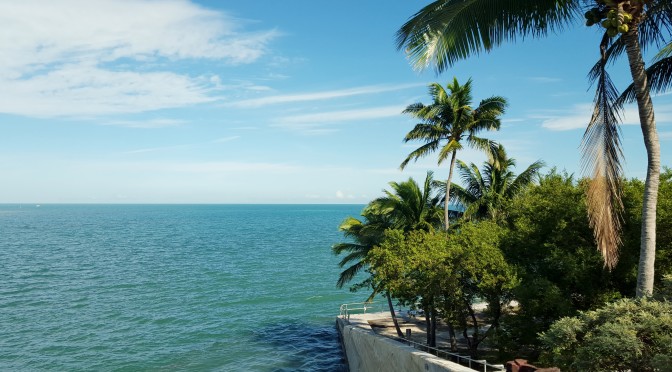Finally, the sun is shining! We peek outside our loud, smelly room at the Tree Lime Resort to see the sight of the sun riding into a crystal clear sky. Yes! Today we can begin our ride.
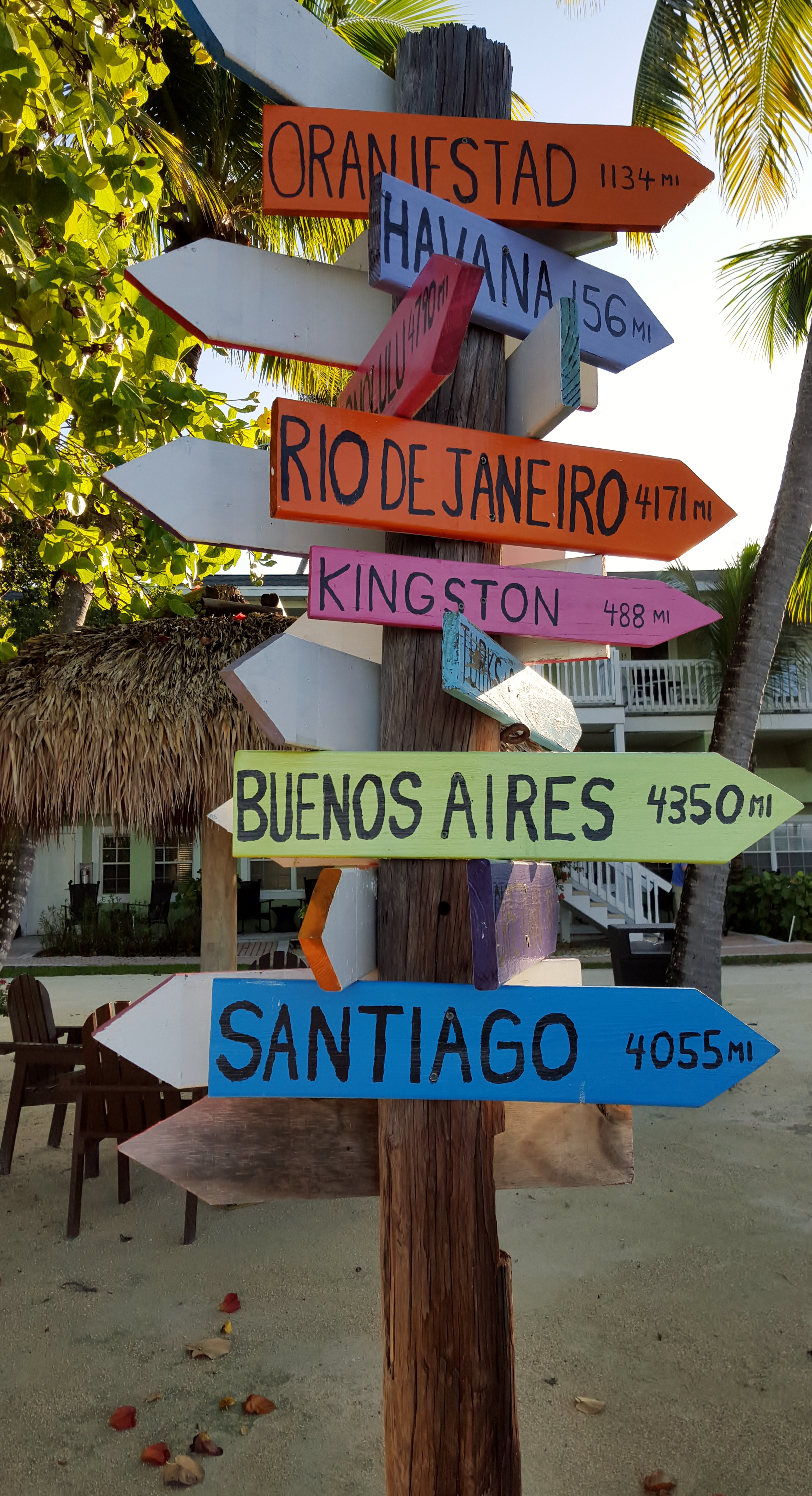
First, we need to get our car to our hotel on Duck Key. It’s just a few miles south of us, so we head on out. The hotel is completely accommodating and let us park in their regular guest lot. We spend a few minutes assembling the trikes and loading all our gear, and off we go.
We are actually going to ride a trail to Key West. It’s called the Florida Keys Overseas Heritage Trail. This trail is envisioned as a continuous 106 miles corridor running all the way from Key Largo to Key West. The trail incorporates most of the rail bed of the former Overseas Railroad built by the Florida East Coast Railway. Rail service began in 1911, and ended in 1935 following a labor day hurricane that destroyed much of the track, The trail runs parallel to US Route 1 , and provides pedestrians and cyclists an off-road route through this part of the world.
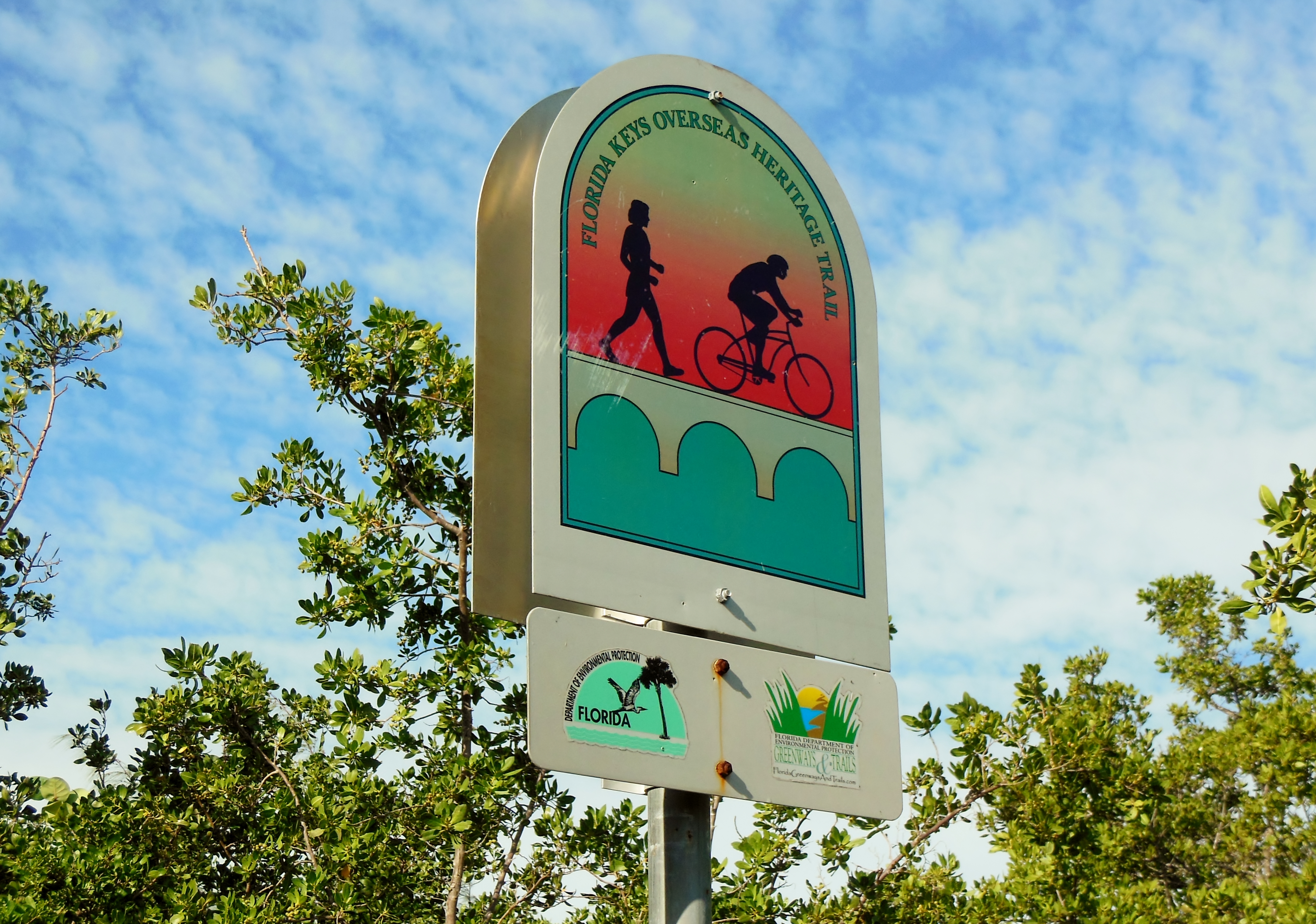
It’s a grand vision, but it is not yet complete. There are some places along the way where the trail does not yet exist, and a number of other interesting problems with the trail. Still, it’s a fun ride and where the trail does exists it is fabulous.
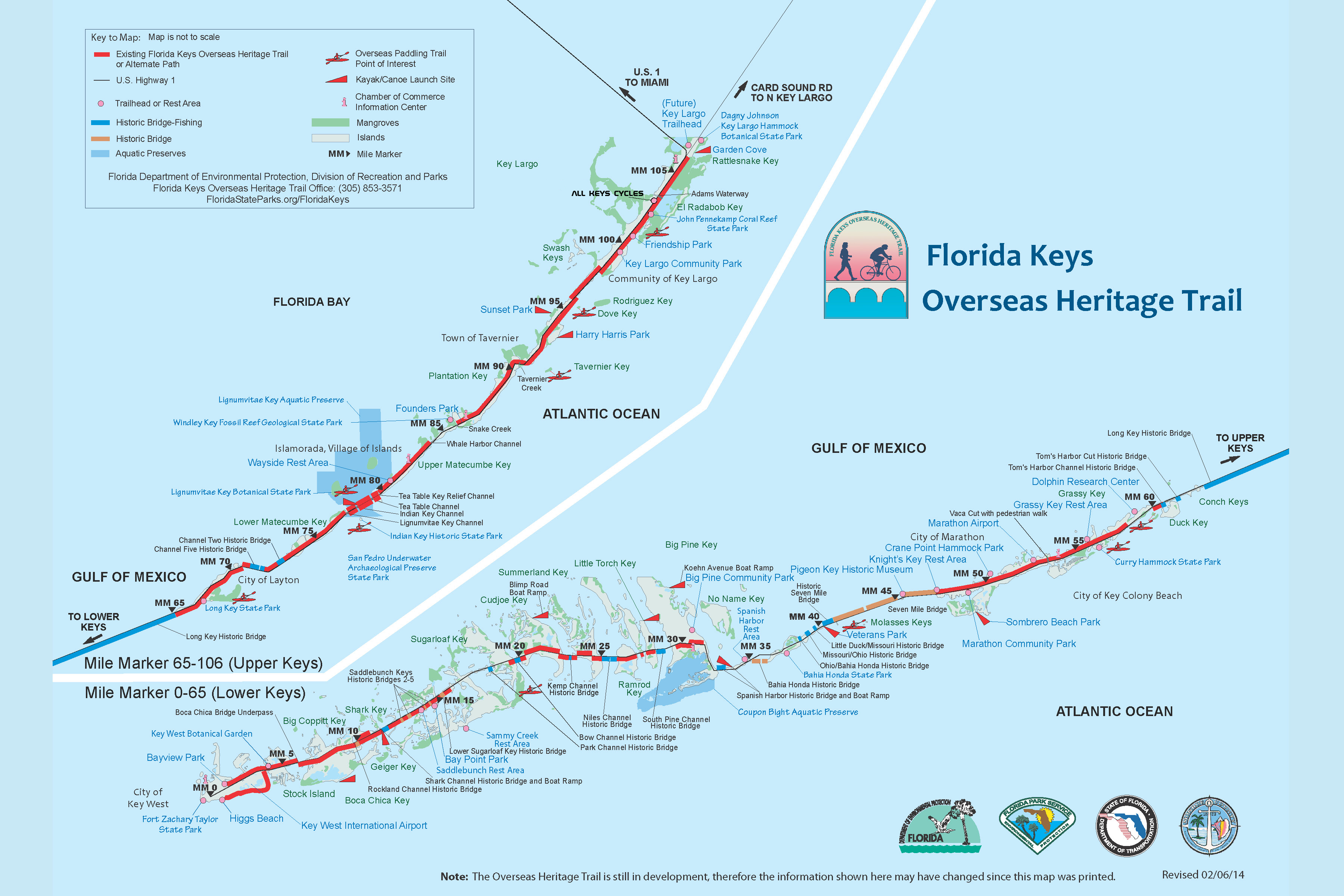
Route 1 is a busy road. 4 lanes in some places, 2 lanes in others. Traffic varies from moderate to heavy, and is moving along pretty quick. The posted speed limit varies from 40 to 55, but except for a very few places, the traffic we saw was running a pretty steady 60-65.
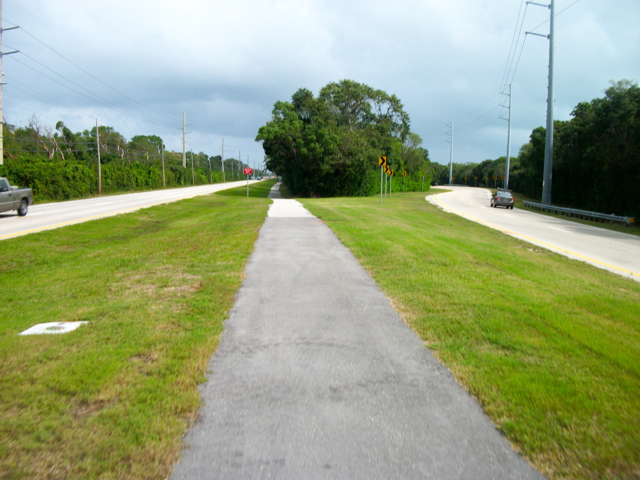
As we get started, the trail is essentially a wide sidewalk along Route 1. There are a couple of sections where the trail pulls away from the highway and runs through the mangroves near the water. These sections are beautiful and make for a really good trail ride.
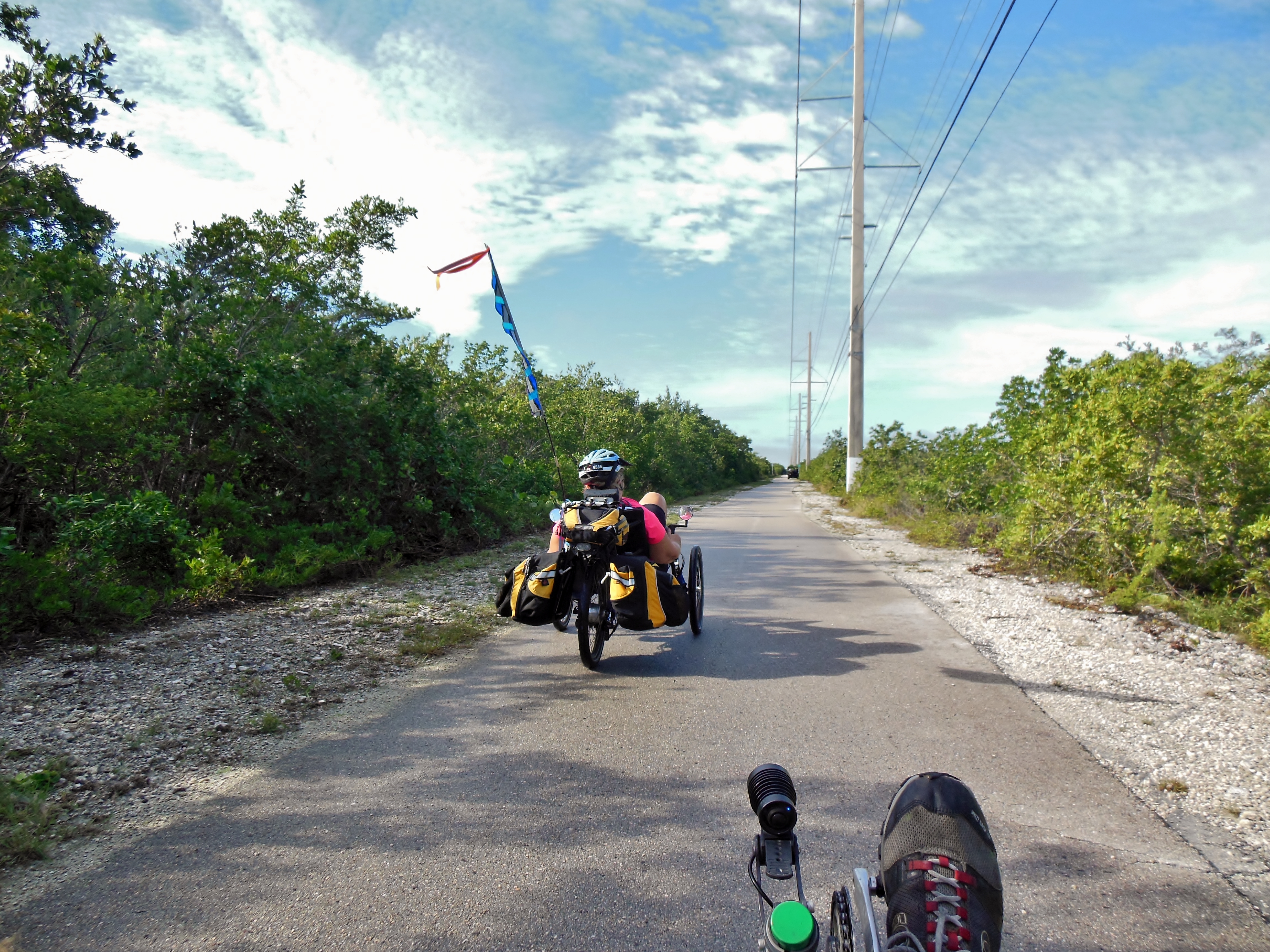
The trail is not without its problems, however. First, the trail just ends arbitrarily in some places, and cyclists need to transition to the Route 1 roadbed. This is not a terrible problem, as the road has either a marked bike lane or a nice shoulder and is easily ridden.
More concerning are the crossovers. The trail, again at seemingly arbitrary places, crosses from one side of the road to the other. These crossings usually have cross ways, but there are no signals or warning lights, so it is necessary to be very cautious when making the dash across the highway .
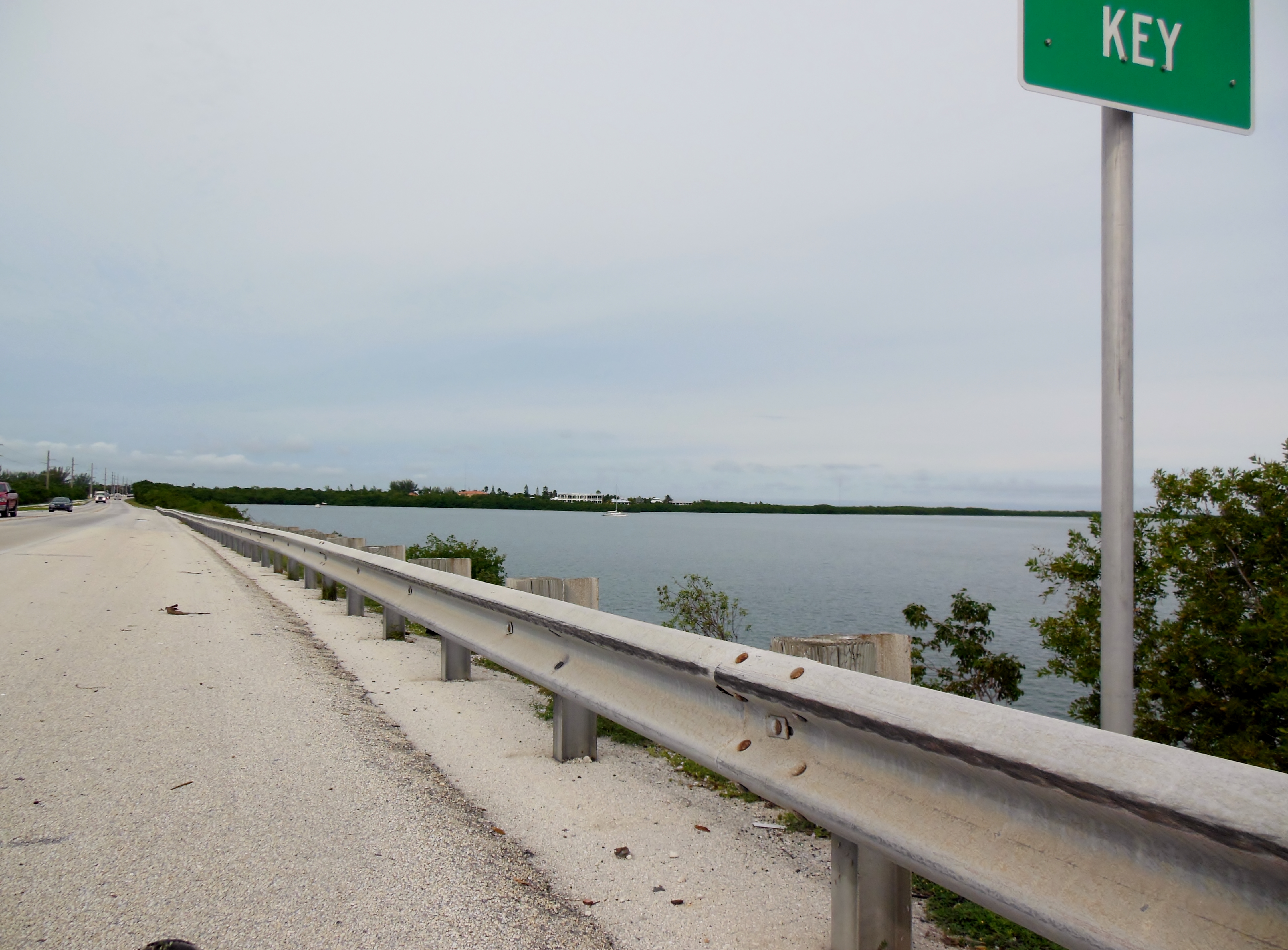
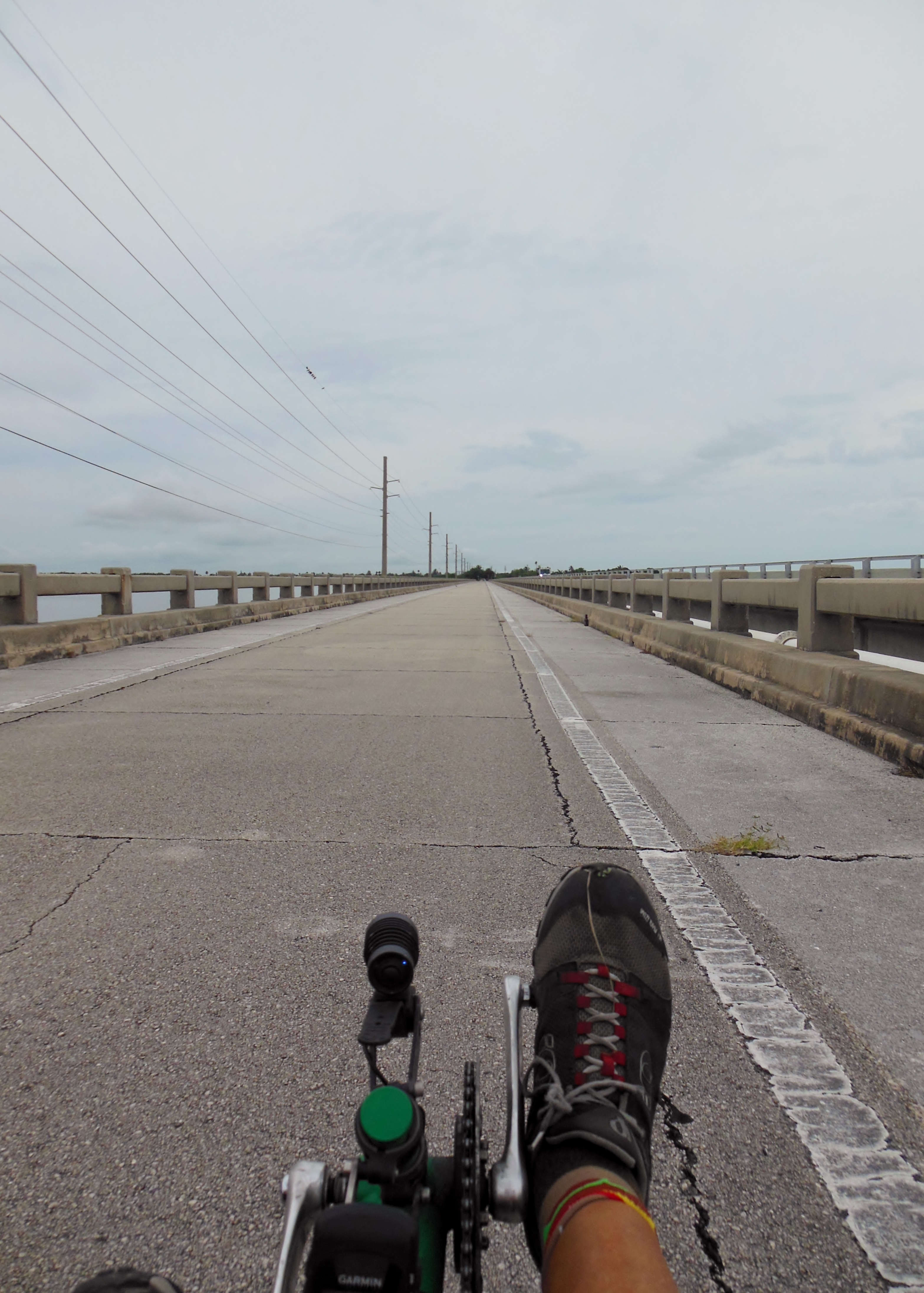
Finally, there are the bridges. The road through the keys is littered with bridges. It is one of the things that makes riding though the keys so much fun. We all love crossing bridges and getting the spectacular water views that go with bridge crossings. In some cases the trail uses the bridges that are left over from the old rail bed, and cross away from the highway.
But on most bridges, the trail requires riders to exit the trail to the road to cross the bridge and then get back on the trail on the other side. Again, the bridges all contain a marked bike lane. But it is particularly difficult when the trail is running along the left hand side of the road. This requires riders to cross the highway, ride across the bridge, and then cross back. Alternatively, it encourages riders to cross the bridge using the shoulder on the wrong side of the road. We met many cyclists traveling the opposite direction from us using the bike lane going the wrong way. This is a terribly dangerous practice! We were a little appalled by how many people we saw doing this.
Because of these problems, many cyclists choose to just ride the highway the entire way. It can be done, and truthfully, we chose the highway rather that cross over to the left side of the road quite often, but we did ride the trail when it was on our side.
Marathon is one of the largest cities in the keys, encompassing several islands . The trail runs along side the highway here, and we enjoyed seeing some of the kitschy tourist trap displays.
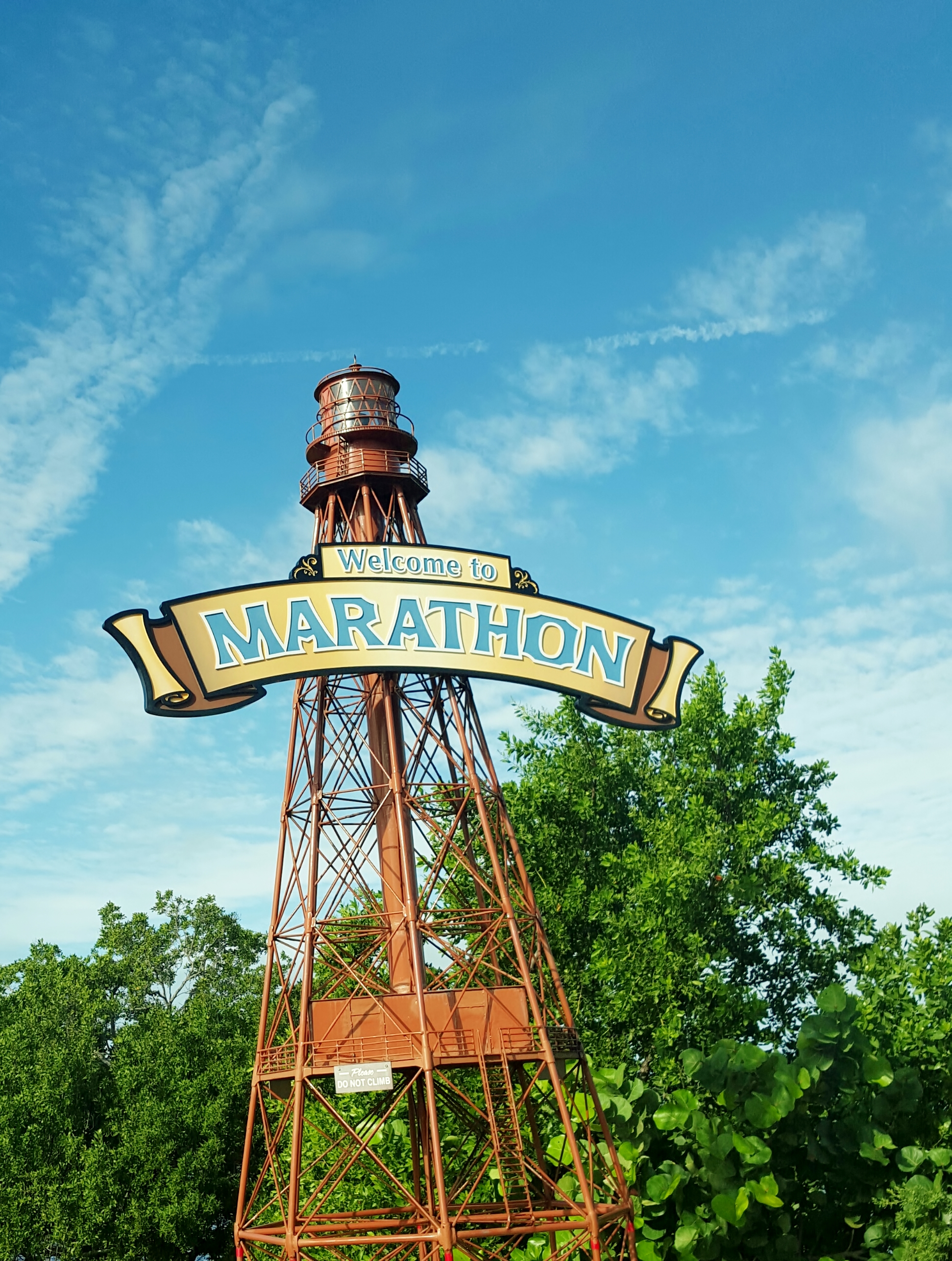

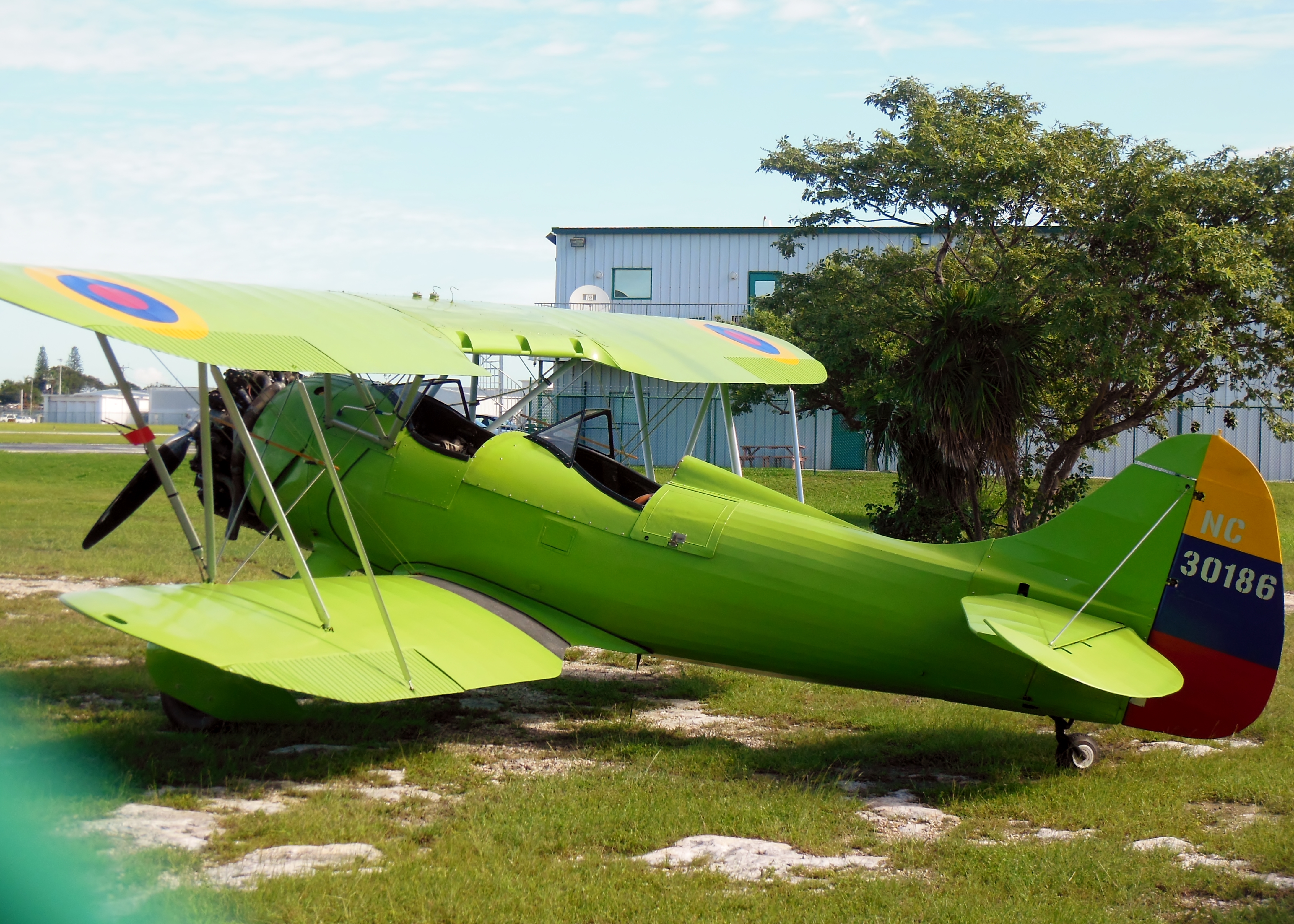
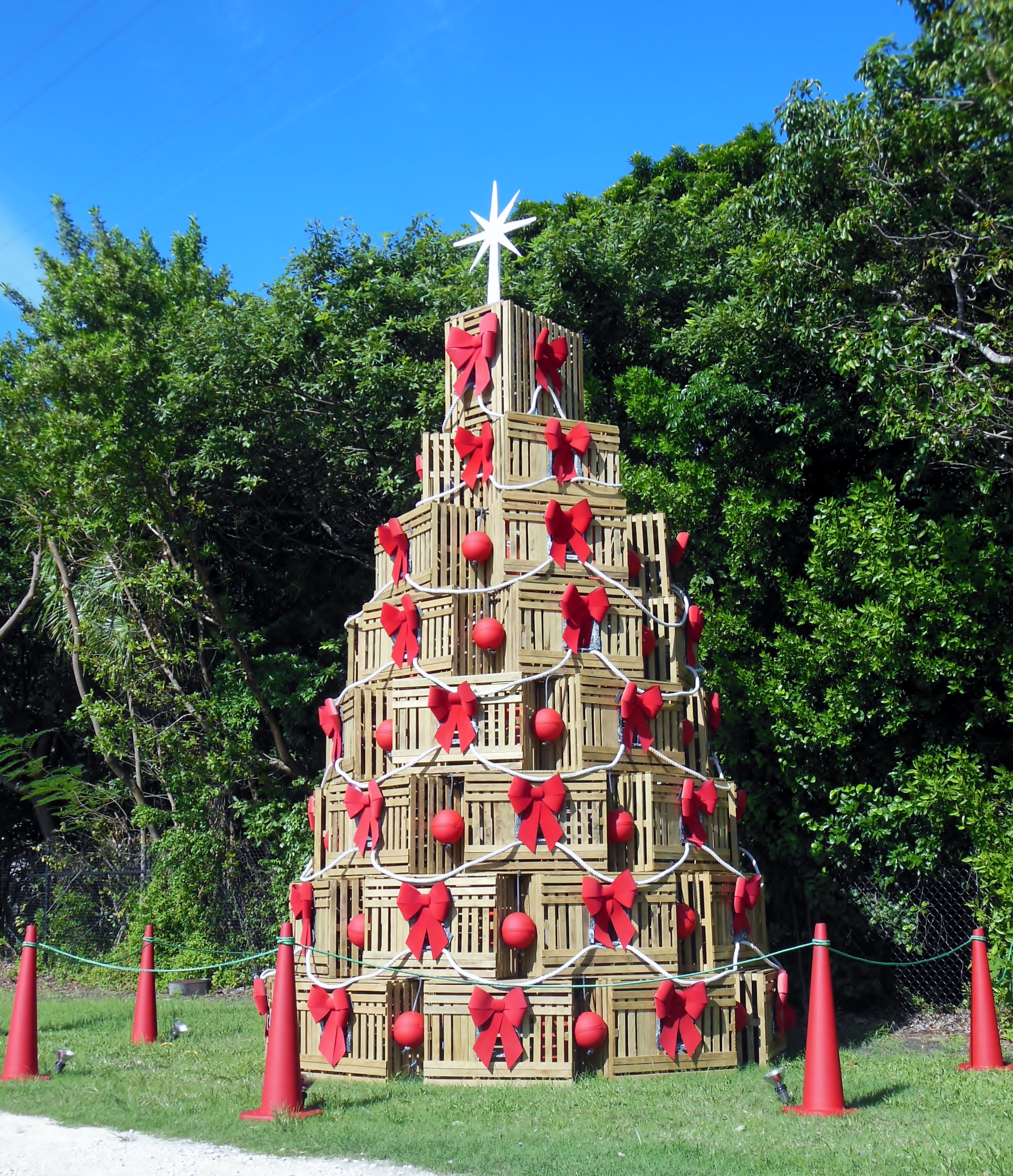
At the south end of Marathon, we come to the famous Seven Mile Bridge. The Seven Mile Bridge is an iconic bridge in the Florida Keys, stretching out into the open sea, connecting Knight’s Key in the Middle Keys to Little Duck Key in the Lower Keys. At the time of its completion in 1982, it was the longest continuous concrete segmental bridge in the world, and is still one of the longest bridges in America.
We had heard mixed reviews about this bridge from our cyclist friends. Some people told us it was the prettiest 7 miles we would ever ride, while others warned us about how horribly dangerous it would be. So we were a bit nervous approaching the span.
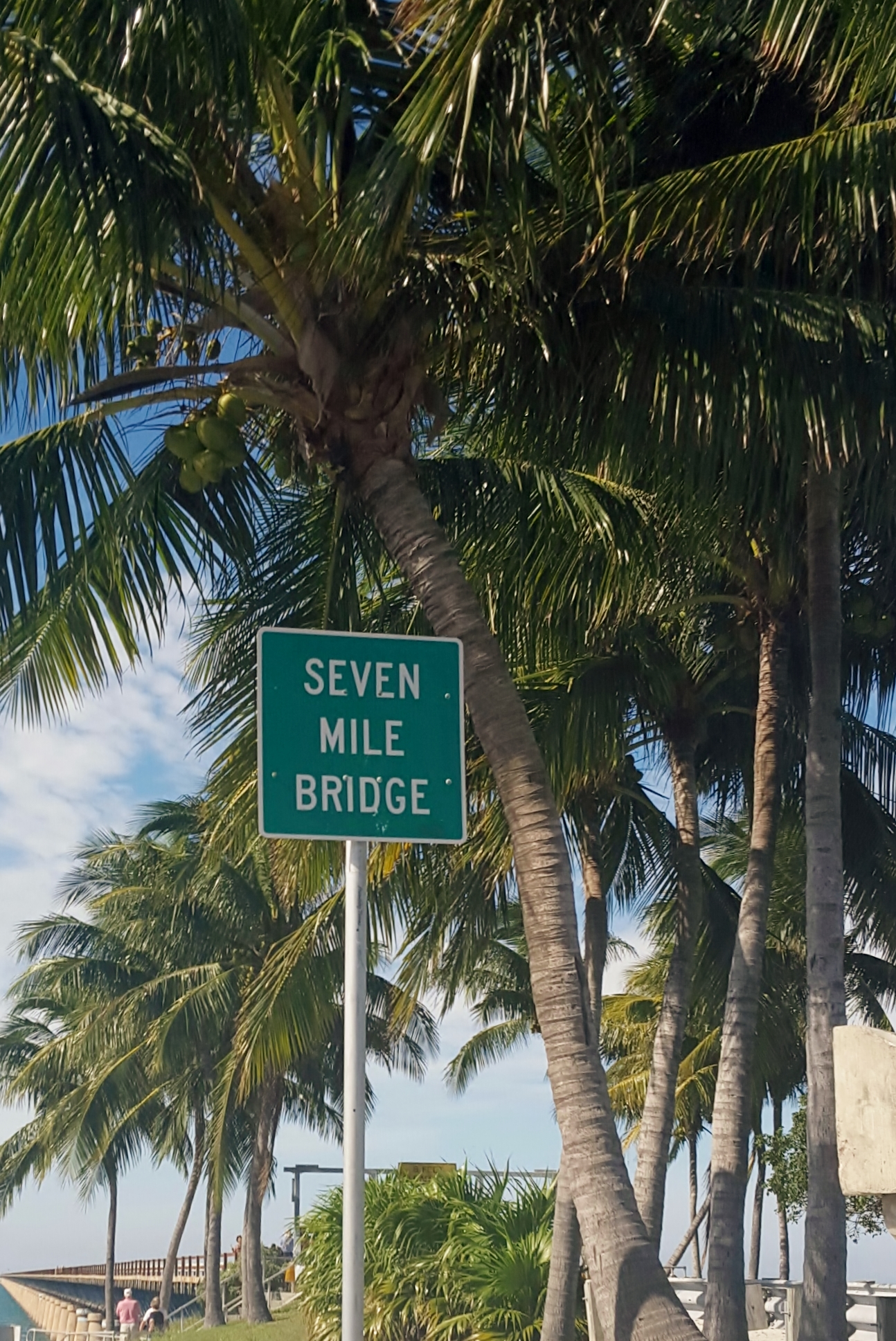
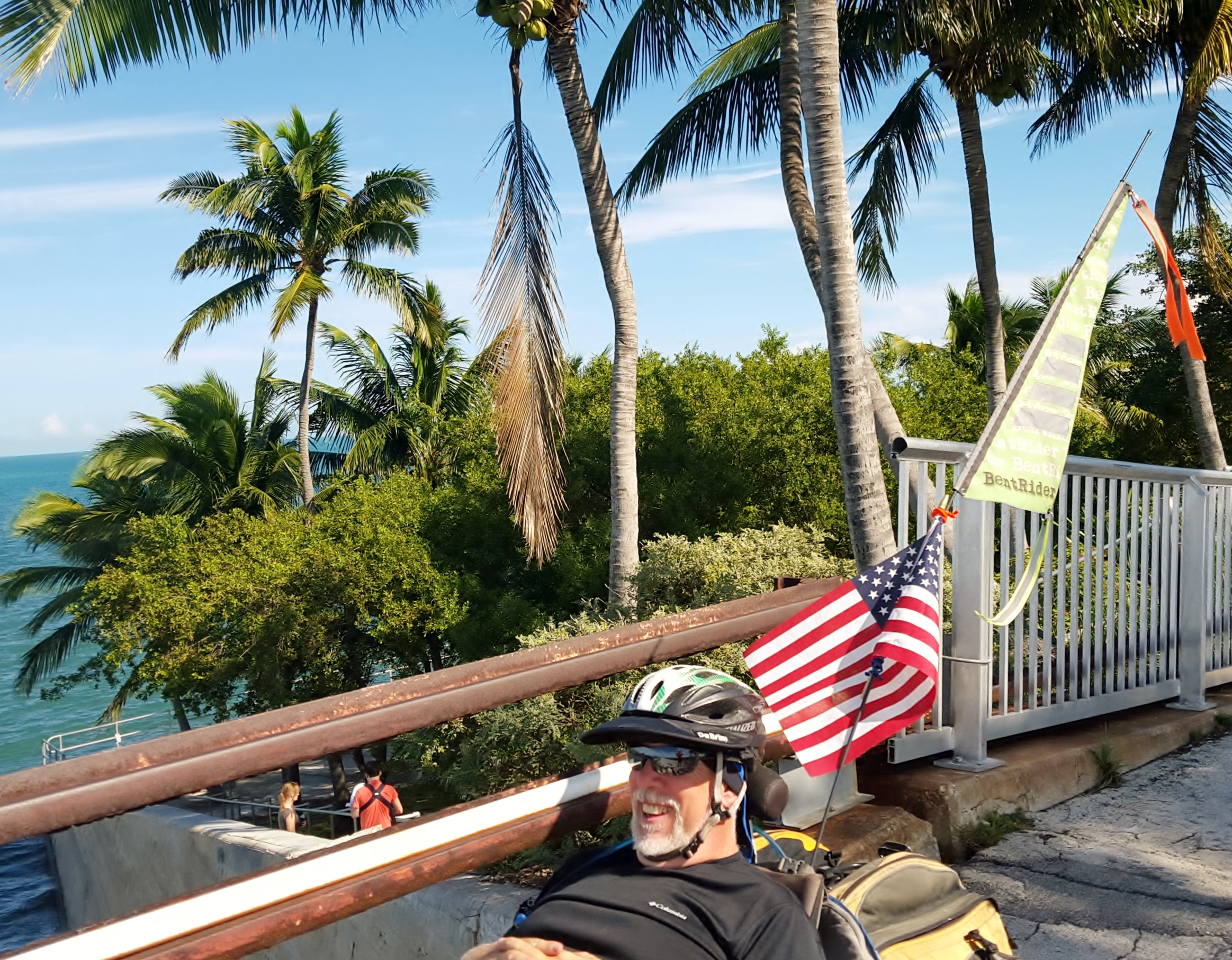
There are actually 2 bridges in this spot – the original railroad bridge and the new modern highway bridge. The original railroad bridge is open to pedestrian and bicycle traffic only – but sadly it does not go all the way across the channel. So we had no choice but to ride the automobile bridge.
The crossing was not a terrible experience. The bridge has a 5 foot wide shoulder that left enough room for us next to all the traffic. There was plenty of traffic – including speeding trucks and RV’s – but I never felt unsafe. We had a nice tail wind going across, and we both emerged on the far end feeling exhilarated by the crossing.
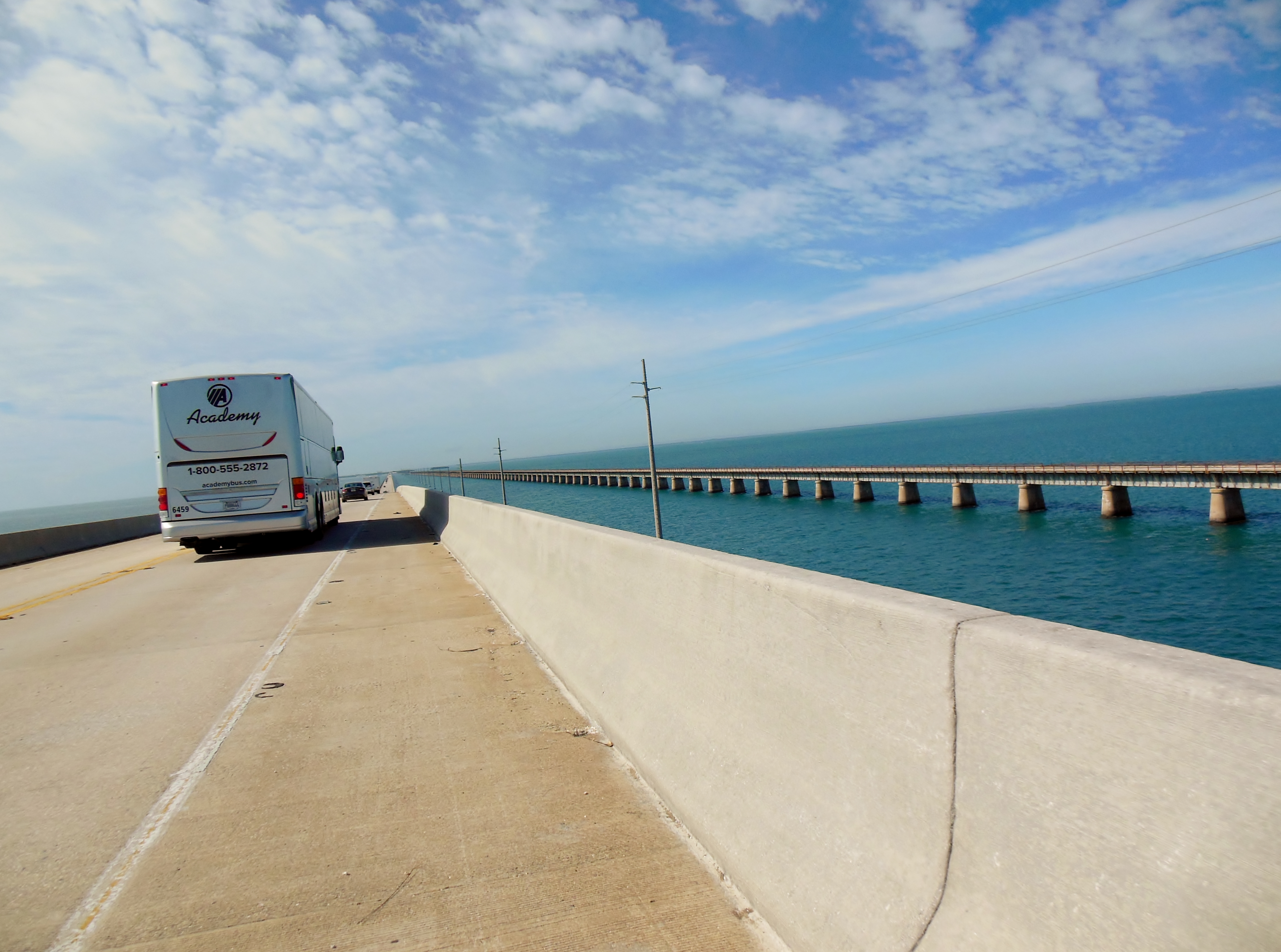
It is one of the very few times I have ever wished I was riding an upright bike instead of the trike however. The bridge has concrete barriers as guard rails all the way across. The bike lane put us right next to them, and they partially blocked our view for much of the ride. It was possible to see over them, so it was not all bad, but being a little higher up would have been nicer. Never the less, we got some spectacular views across the water.
Following the Seven Mile Bridge are a series of shorter bridges that lead from key to key. Little Duck Key, Missouri Key, Ohio Key, Bahia Honda Key, Summerland Key and finally Big Pine Key. So many bridges and so many beautiful water vistas!
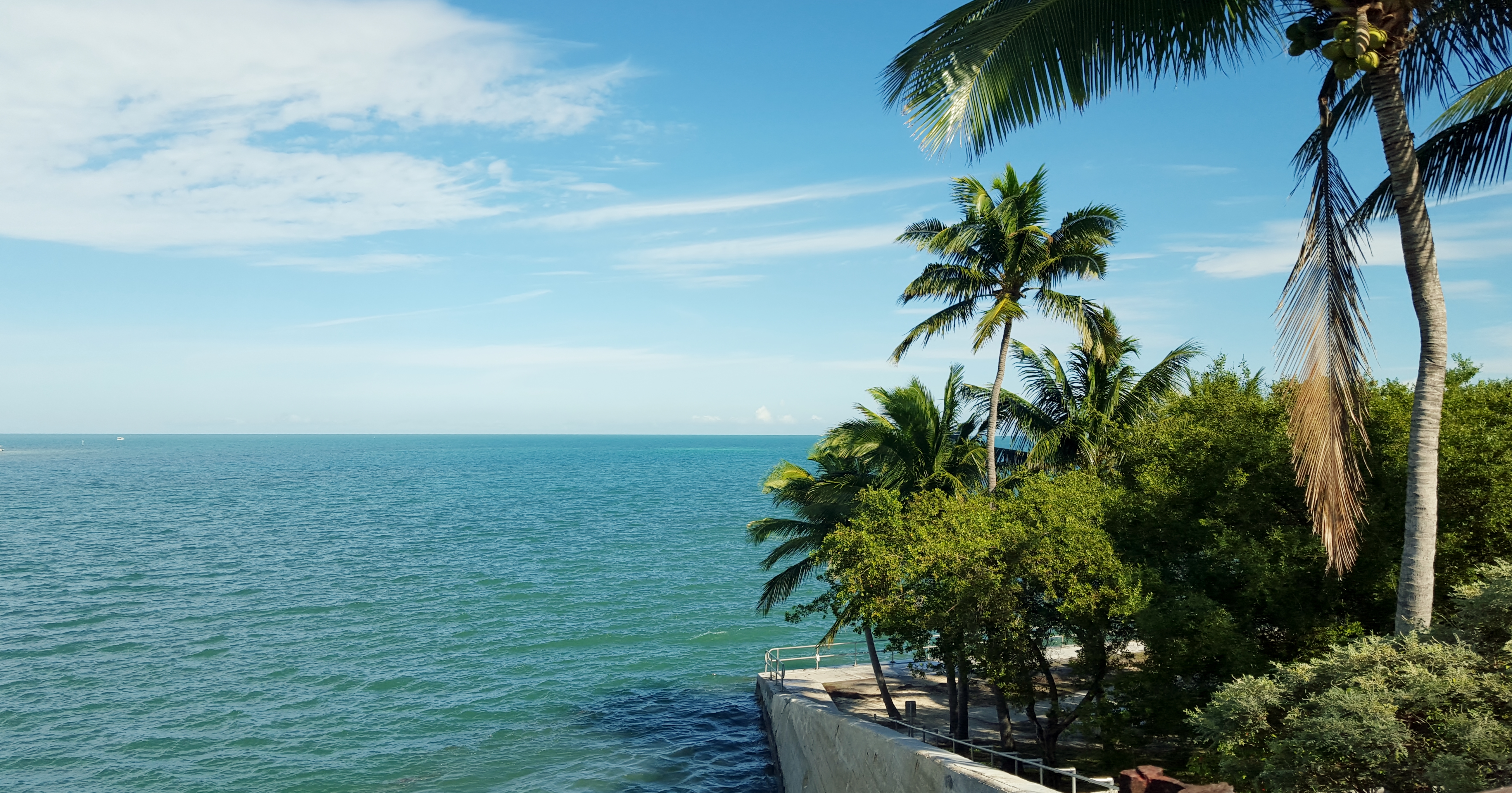
Bahia Honda Key is home to Bahia Honda State Park. The entire island is almost uninhabited. The 524-acre park was founded in 1961 and occupies most of the island. It’s possible to camp in the park here, and if you wanted to do a self-supported tour in the keys, this might be a good place to stop. But we have plans for a more comfortable stay this night, so we press on a little further.
In Bahia Vista state park we kept noticing stuff moving in the bushes and along the sides of the trail and road. When we stopped to look closely, that’s when we saw them. The iguanas! Not just a few – but lots of them. Once, as we descended off one of the bridges, we disturbed an entire herd of them and they charged across our path in a large pack! It was a sight!
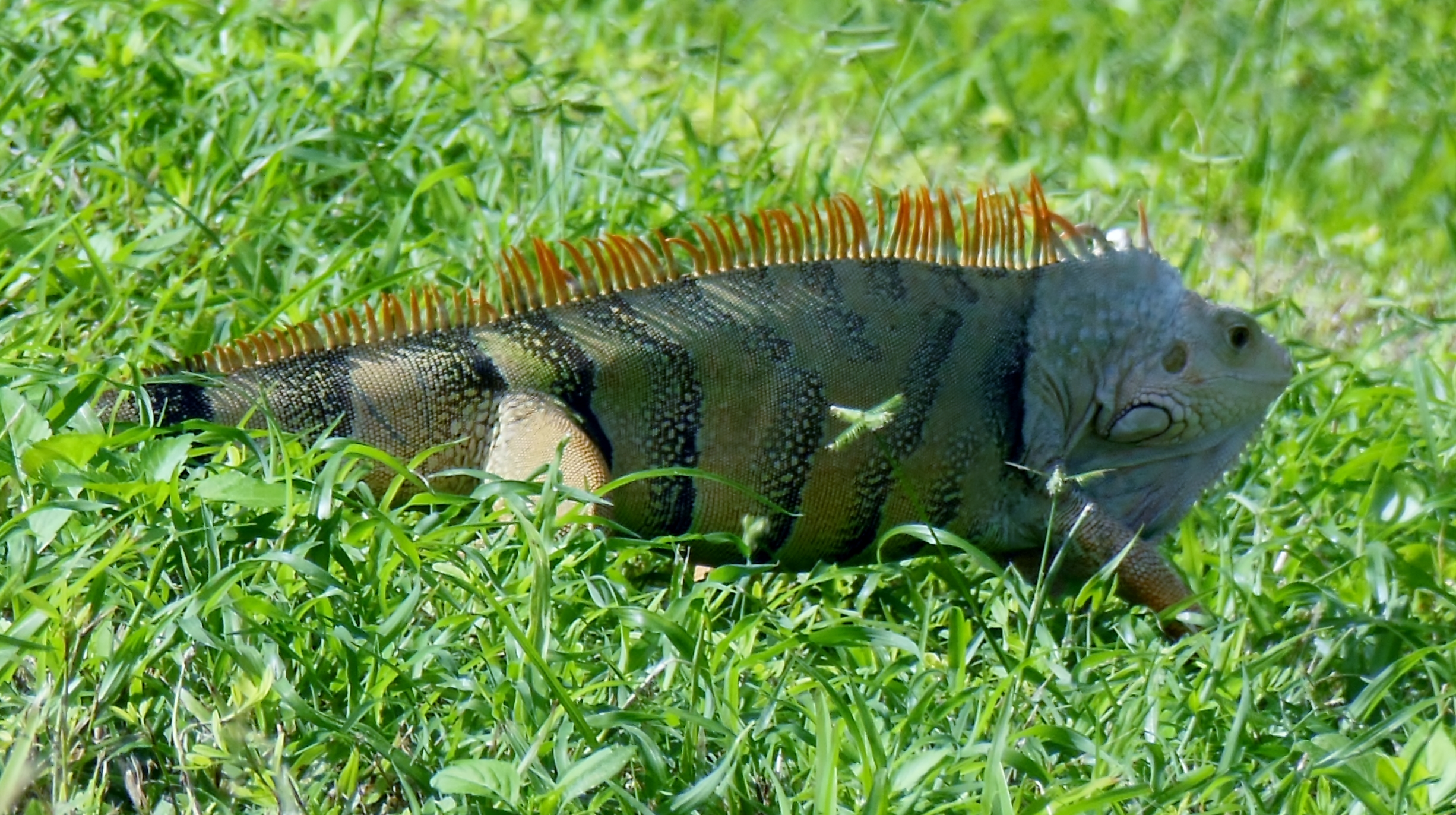
We thought these fellows were kind of cute. Part of the quirky and exotic Key West experience. But it turns out the residents in the area are not nearly so enamored of the iguana. They are a non-native species. Speculation is that they are released or escaped pets that breed unchecked across all south Florida They are everywhere in the keys, have no natural predators, and seem to be a real problem.
Iguanas will eat mangos, tomatoes, orchids, shrubs and trees. In fact, the iguana will eat anything that doesn’t eat them first…which is everything in the Florida Keys. People cannot landscape their yards, because the iguanas will tear it to shreds in just a day or two. They have a strange affinity for defecating near water, which means anybody that lives on the water spends time scraping iguana turds off of their deck and from around their pool.
There does not seem to be a good way to get rid of them. We noticed billboards for iguana removal services, but we wonder how they do it. Iguanas can be trapped, but once you’ve caught them, what do you do with them? Because they are a non-native species, it’s illegal to move trapped iguanas anywhere in the state.
Some residents just shoot them. Others use the meat for bait in crab traps. Some local Hispanic “sportsmen” call the iguanas “pollo del arbor” or chicken of the tree. Apparently, iguana is the other white meat. We were told they taste just like chicken! If this is appealing to you, there we offer these fine recipes for preparing your own iguana delicacies !

Once past the iguana herd, we rode over the last bridge to Big Pine Key. Big Pine is home to the National Key Deer Preserve. This is a nice place to cycle, because through the preserve, the speed limit has been reduced to 30 MPH, and is enforced. So cars and truck are moving slower through this section of the ride.
Our destination for the evening is on Big Pine Key, and it’s only a few more miles before we turn off the highway and ride 1.5 miles into the interior of the preserve to stay at The Barnacle Bed and Breakfast.
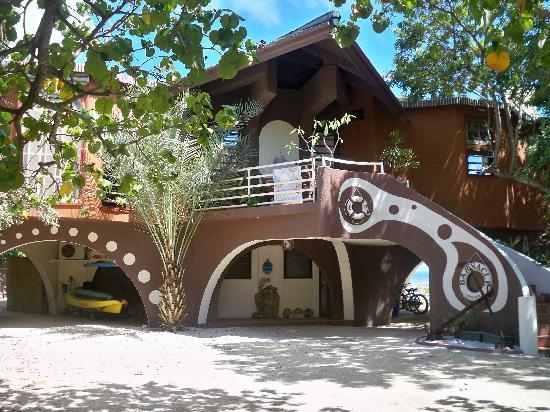
This B&B can best be described as funky & quirky ~ all in a good way. The room was comfy. But it seems the electrical outlets and bathroom fixtures were installed by a schizophrenic contractor. The bathrooms area was very tight. I doubt that there is much about this place’s construction that is ‘to code’. But we had everything we needed.
Tim, the inn keeper, was really nice. He got us checked in, gave us a nice dry out-of-the-way spot to park our bikes, and made sure we were comfortable. The Barnacle B&B does have a great location – it is far enough from the highway and from surrounding homes that it is very quiet. It’s right on the Gulf so there are pretty views from the rooms. And there is abundant wild life – birds, more iguanas and of course the Key Deer.
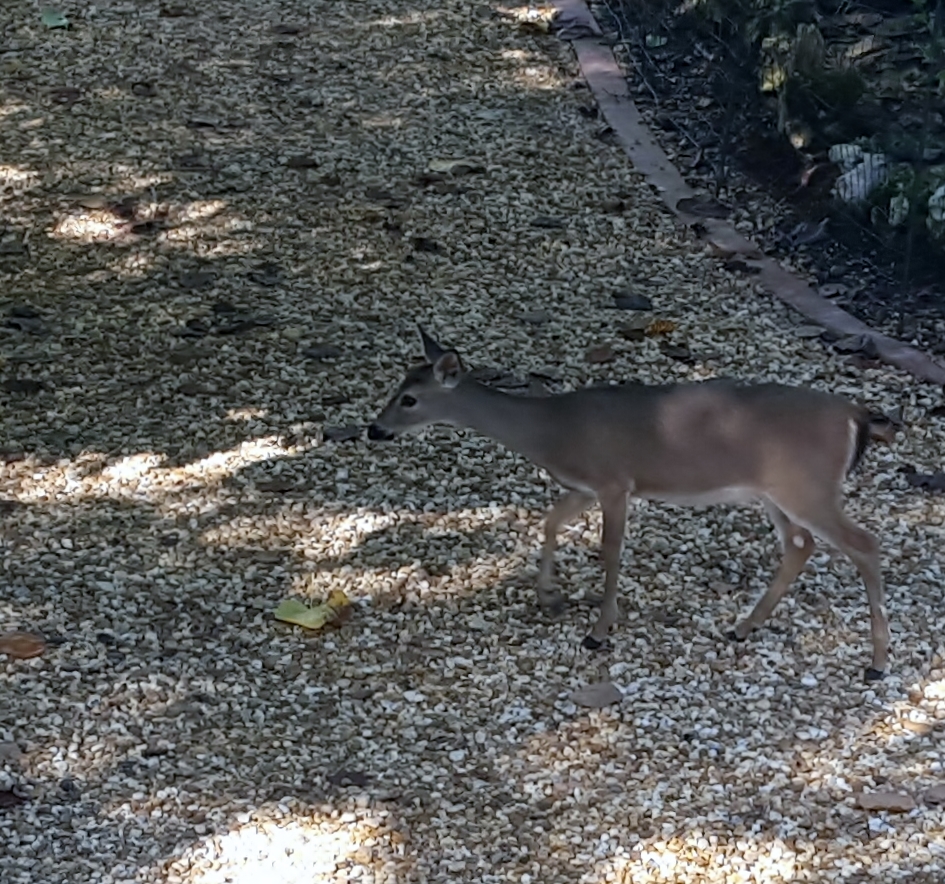
The Key Deer is a fascinating animal. Unlike the iguana, they are a native population. These deer inhabit Big Pine Key and various surrounding keys. The Key deer is the smallest of all white-tailed deer. They are not found anywhere else in the world.
These animals are not very big. The shoulder height of Key deer is between 24-28 inches. Does weight 45-65 pounds while bucks weigh 55 to 75. They are about as big as a medium sized dog.
Due to uncontrolled hunting and habitat destruction, their numbers were estimated less than 50 animals in 1940’s.
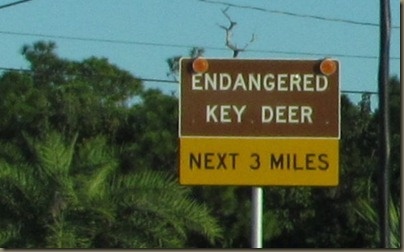
With the establishment of National Key Deer Refuge in 1957 and intensive law enforcement efforts, the population has since increased and has now stabilized. Present population is 250 to 300 deer with two-thirds of this population on Big Pine Key.
There are signs up everywhere around the preserve letting you

know it is illegal to feed the deer. But people obviously ignore this ordinance, because the deer are practically tame, and will approach people very closely looking for handouts.
The only real problem we had at the Barnacle B&B was getting dinner. If we had planned better it would have been fine. When we arrived, we unpacked, took a nice hot shower and changed into fresh clean cloths. Then we realized that the B&B is located about 3 miles from the nearest restaurant. Neither of us felt much like getting back on the bikes in the dark to go get dinner. Luckily there is a nearby Chinese restaurant that delivers. So we dined on fried rice and orange chicken and turned in early on the comfy bed.
Tomorrow we will arrive in Key West! We are both looking forward to seeing the town and learning about how much it has changed since out last visit. It should be another great ride….

